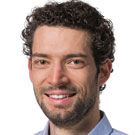Pichler Group - Quantum Science Theory

The research group led by Hannes Pichler studies quantum optical systems, quantum many-body physics and quantum information. The group aims at laying the theoretical foundations for next generation experiments in quantum science and technology, often in close collaborations with experimental teams. The main research interests are focussed on developing the theoretical tools to understand and describe quantum many-body systems, propose protocols to manipulate and probe them, and develop applications exploiting many-body quantum effects.
More: "Many-Body Quantum Optics"
Hammerer Group - Quantum Optics and Quantum Metrology

The Hammerer group conducts research in theoretical quantum optics, with a particular focus on quantum metrology and precision measurement. We study physical systems that can be described and controlled at the level of individual quanta, and that can be employed in quantum technologies. Current research includes trapped ions for novel atomic clocks and quantum information processing, Bose–Einstein condensates for matter-wave interferometry, correlated quantum states of the electromagnetic field in resonators and waveguides, and quantum mechanical degrees of freedom of mesoscopic and macroscopic solid-state structures. Our work combines a broad range of analytical and numerical methods to describe the quantum dynamics of open systems and to analyze complex quantum correlations. The theoretical questions we address are closely linked to ongoing quantum optics experiments in national and international collaborations.
Kirchmair Lab - Superconducting quantum circuits

Gerhard Kirchmair’s research group works on superconducting circuits and their application for quantum computation and simulation. Superconducting Josephson junctions are used to realize the quantum mechanical properties of these circuits. By using lithographic processes, similar to those used in microchip production, the researchers are able to change and control quantum properties in such a way that allows them to engineer artificial atoms and couple them to electrical resonators. These so called cavity quantum electrodynamic systems are ideal for studying light-matter interactions. They are also considered to be promising systems to realize a quantum computer. In addition, the research group investigates the coupling of these circuits to other quantum systems such as ions, cold atoms and mechanical resonators. These hybrid systems open up new possibilities to study quantum effects and develop extremely precise measurement systems.
Grimm Lab - Ultracold Atoms and Quantum Gases

The research group led by R. GRIMM investigates ultracold particle systems consisting of optically trapped quantum gases at temperatures close to absolute zero. Because of their superb experimental accessibility and controllability, such systems represent unique model systems for studies of complex quantum many-body be-havior. This facilitates the investigation of quantum phenomena that are difficult to access in conventional condensed-matter systems. The focus of the present experimental work lies on fermionic particle systems and on few-body quantum systems with tunable interactions.
Ferlaino Lab - Dipolar Quantum Gases

The research team led by Francesca Ferlaino focuses on the study of dipolar quantum phenomena, using strongly magnetic atomic species. In 2012, the group has created the first Bose-Einstein condensate of erbium (Er) and shortly after the first degenerate Fermi gases. With this system, Ferlaino and co-workers have explored many-body and few-body dipolar effects, such as the long-awaited observation of an interaction-driven deformation of the Fermi surface and the complex spectra of scattering resonances, which are dominated by the anisotropy of the interactions. By combining for the first time two strongly magnetic elements, erbium (Er) and dysprosium (Dy) they open the door to investigations of complex geometry-dependent quantum systems.
More: "Dipolar Quantum Gases"